Palestinian Cuisine cooking is a rich weaving of flavors, proposed using the region’s estimations and fundamental social factors. This manual examines 5 Palestinian Cooking Recipes that superstar the substance of this lovely culinary strategy for presence. From sumac-infused hen to sweet cheddar heated products, the dishes aren’t the most un-troublesome delectable, reflecting Palestine’s deep-rooted culinary estimations.
Preface to Palestinian Food Recipes
Palestinian food is depicted through a way to deal with shining, privately acquired factors and accentuation of sound flavors. Key staples incorporate olive oil, grains like bulgur and rice, vegetables alongside eggplant and tomatoes, and some flavors like sumac and za’atar. Ordinary cooking systems include slow-searing, grilling, and stewing to produce rich, layered flavors.
5 Believable and Customary Palestinian Food Recipes
Recipe 1: Musakhan (Palestinian Sumac Chicken)

Trimmings Required:
- Chicken (complete or decreased into sums)
- Onions
- Sumac
- Olive oil
- Pine nuts
- Flatbread (like taboon or pita)
- Salt and pepper
Step-through-Step Cooking Rules:
- Saute onions until caramelized.
- Add sumac and olive oil, then burn the chicken.
- Layer chook and onions on flatbread, sprinkle with pine nuts, and intensity.
- Serve warmth with extra sumac for taste.
Social Significance and Serving Thoughts: Musakhan is a celebratory dish often served at weddings and family parties. It’s usually eaten with fingers, highlighting shared eating and benevolence.
Recipe 2: Maqluba (Upside down Rice Dish)
Trimmings and Assortments:
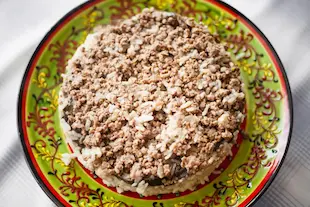
Ingredients and Variations:
- Rice
- Chicken or lamb
- Eggplant
- Potatoes
- Cauliflower (non-compulsory)
- Spices like turmeric, cinnamon, and cardamom
Cooking Method and Tips for Perfect Layers:
- Layer elements in a pot, beginning with meat and vegetables.
- Add rice and spices, then prepare dinner till it is moderate.
- Flip the pot upside down properly to serve, revealing the beautiful layers.
Historical Background of Maqluba: Maqluba means “upside-down” in Arabic, symbolizing the pot being flipped earlier than served. This dish has ancient roots in Palestinian and Levantine delicacies. We emphasize communal eating and hospitality.
Recipe 3: Mutabbal (Palestinian Eggplant Dip)
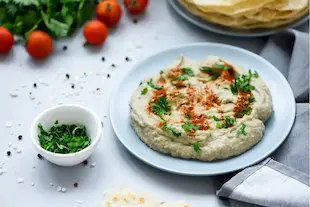
Ingredients and Preparation:
- Eggplant
- Tahini
- Garlic
- Lemon juice
- Olive oil
- Salt and cumin
Serving Ideas with Fresh Bread or as Part of Mezze: Mutabbal is a staple in Palestinian mezze platters, served alongside freshly baked pita bread. It’s creamy, smoky, and filled with flavor.
Health Benefits and Regional Variations:
Eggplant is rich in antioxidants and fiber, making mutabbal a nutritious addition to any meal. Variations can also encompass more additives like yogurt or roasted bell peppers.
Recipe 4: Fatayer (Spinach-crammed Pastry)
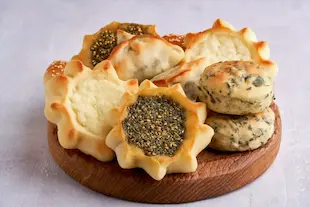
Dough Preparation and Filling Options:
- Flour
- Yeast
- Olive oil
- Spinach
- Onions
- Sumac or lemon juice
Baking Techniques and Ideal Texture:
- Roll out the dough and fill with spinach mixture.
- Shape into triangles or squares, then bake until golden.
- Serve warmth with a squeeze of lemon juice.
Common Accompaniments and Tea Pairings: Fatayer is regularly loved with sweet mint tea. Its savory filling and flaky crust make it a well-known snack or mild meal.
Recipe 5: Knafeh (Sweet Cheese Pastry)
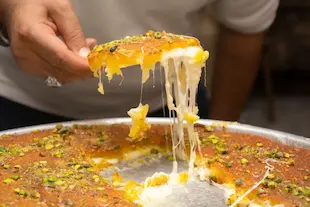
Ingredients for the Pastry and Cheese Filling:
- Shredded phyllo dough (kataifi)
- Nabulsi or Akkawi cheese
- Clarified butter (ghee)
- Orange blossom water
- Pistachios or almonds
Baking Instructions and Syrup Preparation:
- Layer shredded dough with cheese and nuts.
- Bake till golden and crispy.
- Pour syrup over the latest pastry and allow it to soak.
Festive Occasions and Traditions Associated with Knafeh: Knafeh is a staple dessert in Ramadan and a terrific festive sport. Its candy, cheesy flavor, and crispy texture make it a cherished address within the direction of Palestine.
Historical Context:
Palestinian cuisine is deeply rooted in information, reflecting a tapestry of cultural influences from historical civilizations to trendy times. Explore how historical sports activities and interactions have common Palestinian culinary traditions:
Discuss the effect of ancient civilizations like the Phoenicians, Romans, and Ottomans on Palestinian delicacies, highlighting the appearance of staple substances and olive oil, grains, and spices.
Explain how change routes, collectively with the Silk Road and spice trade, brought new flavors and cooking techniques to Palestine.
Describe how Palestinian meal traditions are superior, adapting to converting political and social landscapes, along component durations of Arab rule, Ottoman rule, and British mandate.
Health Benefits:
Highlight the nutritional benefits of key Palestinian elements and cooking techniques:
Discuss the fitness blessings of olive oil, a cornerstone of Palestinian delicacies stated for its coronary heart-wholesome monounsaturated fat and antioxidant houses.
Explore the dietary price of vegetables usually used in Palestinian cooking, including eggplants, bell peppers, and spinach. These vegetables might be rich in vitamins, minerals, and nutritional fiber.
Explain how traditional cooking techniques like grilling, roasting, and steaming contribute to more healthful meal choices than frying or heavy sauces.
Regional Variations:
Explore the diverse nearby variations of inner Palestinian delicacies in the course of exquisite geographical areas:
Compare and evaluate culinary traditions amongst areas similar to the West Bank, Gaza, Jerusalem, and Palestinian corporations in Israel.
Highlight precise substances and dishes specific to each region, which embody Gazan seafood specialties, Jerusalemite spice blends, or traditional Bedouin dishes of the Negev barren location.
Discuss how community versions are closely mirrored by agriculture, weather, and cultural facts in Palestine.
Conclusion
Exploring Palestinian delicacies via those traditional recipes gives now not the handiest culinary enjoyment but a journey into the coronary coronary coronary coronary heart of Palestinian manner of life and records. Each dish tells a story, reflecting the vicinity’s statistics, flavors, and the warm temperature of its humans.
By embracing components like olive oil, sumac, and fragrant spices, those recipes capture the essence of Palestinian cooking—smooth but intensely flavorful, nourishing every frame and soul. From the festive Musakhan to the comforting Maqluba, those dishes invite one to take pride in Palestine’s tastes and enjoy its culinary traditions.
Whether you’re a pro-prepared dinner or new to Palestinian delicacies, those recipes provide an opportunity to connect with a wealthy culinary legacy and, percent inside, the pride of accumulating spherical a desk whole of delicious meals and loved agency. As you embark on your culinary journey with those authentic Palestinian dishes, you may additionally discover not simply recipes but a deeper appreciation for the lifestyles and hospitality that define Palestinian consumption.
Let those flavors transport you to Palestine’s bustling markets and colorful kitchens, where cooking is a painting of love and sharing. Enjoy the delights of Palestinian cuisine and create lasting memories with every dish you prepare and enjoy.
Shukran (thanks) for embracing Palestinian Cuisine Recipes and bringing a flavor of Palestine into your kitchen and home.
FAQs About 5 Authentic and Traditional Palestinian Cuisine Recipes
1. What makes Palestinian delicacies particular?
Palestinian cuisine mirrors the area’s several records and agricultural abundance. Its emphasis on glowing, seasonal components sourced domestically set it aside. Olive oil is a cornerstone of Palestinian cooking, used liberally in salads, dips, and primary dishes.
The delicacies boast a rich array of spices and herbs, together with sumac, za’atar, turmeric, and cumin, which impart depth and complexity to the flavors. Influenced by using Arab, Mediterranean, and Levantine traditions, Palestinian dishes are characterized by the beneficial aid of their simplicity, permitting the natural flavors of the additives to shine through. Meals are regularly shared, emphasizing the cultural rate placed on hospitality and communal ingesting.
2. Can the recipes be tailored for vegetarian diets?
Yes, Palestinian cuisine offers several alternatives for vegetarians. Many conventional dishes can consequences be tailor-made by omitting meat or converting it with plant-based genuine options. For example, mutabbal (smoky eggplant dip) is vegan and pairs notably with clean bread or raw greens.
Fatayer (spinach-crammed pastries) may be made with some vegetable fillings, and maqluba (upside-down rice dish) may be prepared with extra veggies like cauliflower and potatoes in the desire to meat. The bendy use of spices guarantees that vegetarian variations of those dishes are flavorful and plentiful.
3. Where can I discover vital component substances for those recipes?
Specialty factors implemented in Palestinian cuisine, collectively with sumac, za’atar, tahini, and Arabic cheeses like Nabulsi or Akkawi, can typically be located in Middle Eastern grocery stores, global markets, or place of knowledge online shops. Local spice shops or connoisseur meal stores can also supply the gadgets. If unique elements are not without issues in your vicinity, consider exploring online options focusing on Mediterranean and Middle Eastern factors, providing handy transport to your step.
4. Are those recipes appropriate for beginners?
While a few Palestinian dishes can also appear complex, many featured recipes are approachable for chefs of all levels. For example, mutable (eggplant dip) requires vital roasting and blending strategies, while fatayer (spinach-stuffed pastries) may use the store-supplied dough for consolation.
Although it requires layering and flipping, maqluba (upside-down rice dish) is a profitable dish that can be mastered with a workout. Start with much less complicated recipes like musakhan (sumac chicken) or mutable, then discover more excellent intricate dishes as you combine self-perception inside the kitchen.
5. What are commonplace Palestinian meal traditions?
Palestinian food is steeped in subculture and often functions as sports for gatherings and celebrations. They typically start with mezze, a selection of small dishes that include hummus, falafel, and filled grape leaves, served with clean bread.
Central guides regularly characteristic gradual-cooked meats with lamb or fowl, placed through rice pilaf or couscous. Vegetarian alternatives like mujadara (lentils and rice) or crammed greens are also well-known. Meals are concluded with sweet treats like knafeh (cheese pastry soaked in syrup) or baklava, cherished alongside strong Arabic espresso or mint tea. Hospitality is paramount in Palestinian existence, with site visitors warmly welcomed and generously treated to enough flavorful dishes. They emphasize communal eating and hospitality.
Expert Opinion on Palestinian Cuisine:
Renowned cooks and culinary specialists understand Palestinian delicacies for their deep-rooted traditions and flavorful dishes. Chef Yotam Ottolenghi, known for his modern-day Middle Eastern cooking, praises Palestinian cuisine’s glowing additives and fragrant spices, highlighting its capability to captivate the palate and tell a tale through meals.
Similarly, food anthropologist and writer Claudia Roden emphasizes the ancient importance of Palestinian dishes, noting how they mirror the area’s cultural history and culinary evolution over time.
General Public Opinion on Palestinian Cuisine:
The general public increasingly desires Palestinian delicacies for their healthy and comforting nature. Many people apprehend the emphasis on seasonal produce and conventional cooking strategies, which result in dishes bursting with taste. Palestinian ingesting locations and food cars around the arena are gaining popularity, supplying a flavor of recipes like musakhan and knafeh.
Public interest in Palestinian delicacies shows a broader style closer to exploring several culinary traditions and gambling meals that connect us to top-notch cultures and histories.
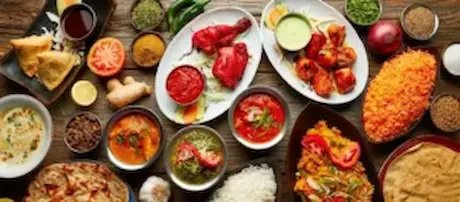
1 thought on “Explore 5-Authentic and Traditional Palestinian Cuisine Recipes”